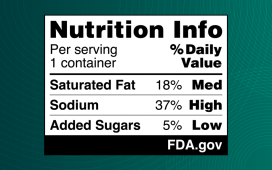Higher ultraprocessed food intake tied to higher intakes of free sugar and sodium
By Lori Solomon HealthDay Reporter
WEDNESDAY, Oct. 16, 2024 (HealthDay News) — Ultraprocessed food (UPF) intake accounts for nearly half of toddlers’ energy and increases in mid-childhood, according to a study published online Oct. 4 in the European Journal of Nutrition.
Rana E. Conway, Ph.D., from University College London, and colleagues used data from children in the U.K. Gemini twin cohort at 21 months (2,591 children) and 7 years (592 children) to characterize trends in UPF intakes in toddlerhood and mid-childhood.
The researchers found that the contribution of UPF to total energy was 46.9 percent at 21 months and 59.4 percent at 7 years. In toddlerhood, principal UPF subgroups included yogurts, higher-fiber breakfast cereals, and wholegrain breads but switched to puddings, sweet cereal products, and white breads in mid-childhood. Mean free sugar and sodium intakes exceeded recommended maximums at both ages. There was a negative association between UPF intake and fat, saturated fat, and protein intake in toddlerhood and fiber intake in mid-childhood (P < 0.001). Being in the highest UPF intake quintile in toddlerhood predicted being in the highest quintile in mid-childhood (odds ratio, 9.40).
“Effective policies are needed to reduce UPF intakes in the early years,” the authors write.
Abstract/Full Text (subscription or payment may be required)
Copyright © 2024 HealthDay. All rights reserved.








